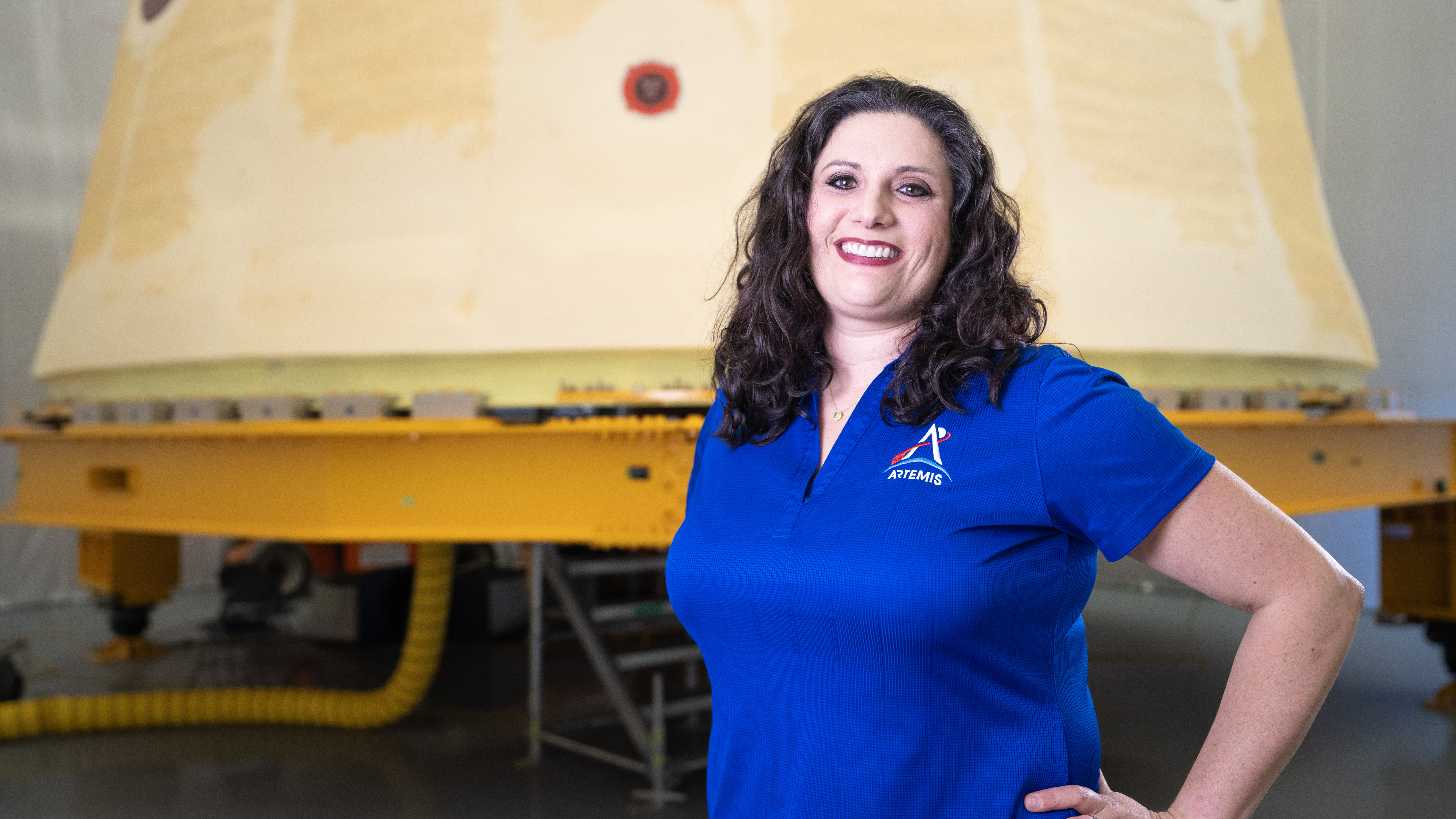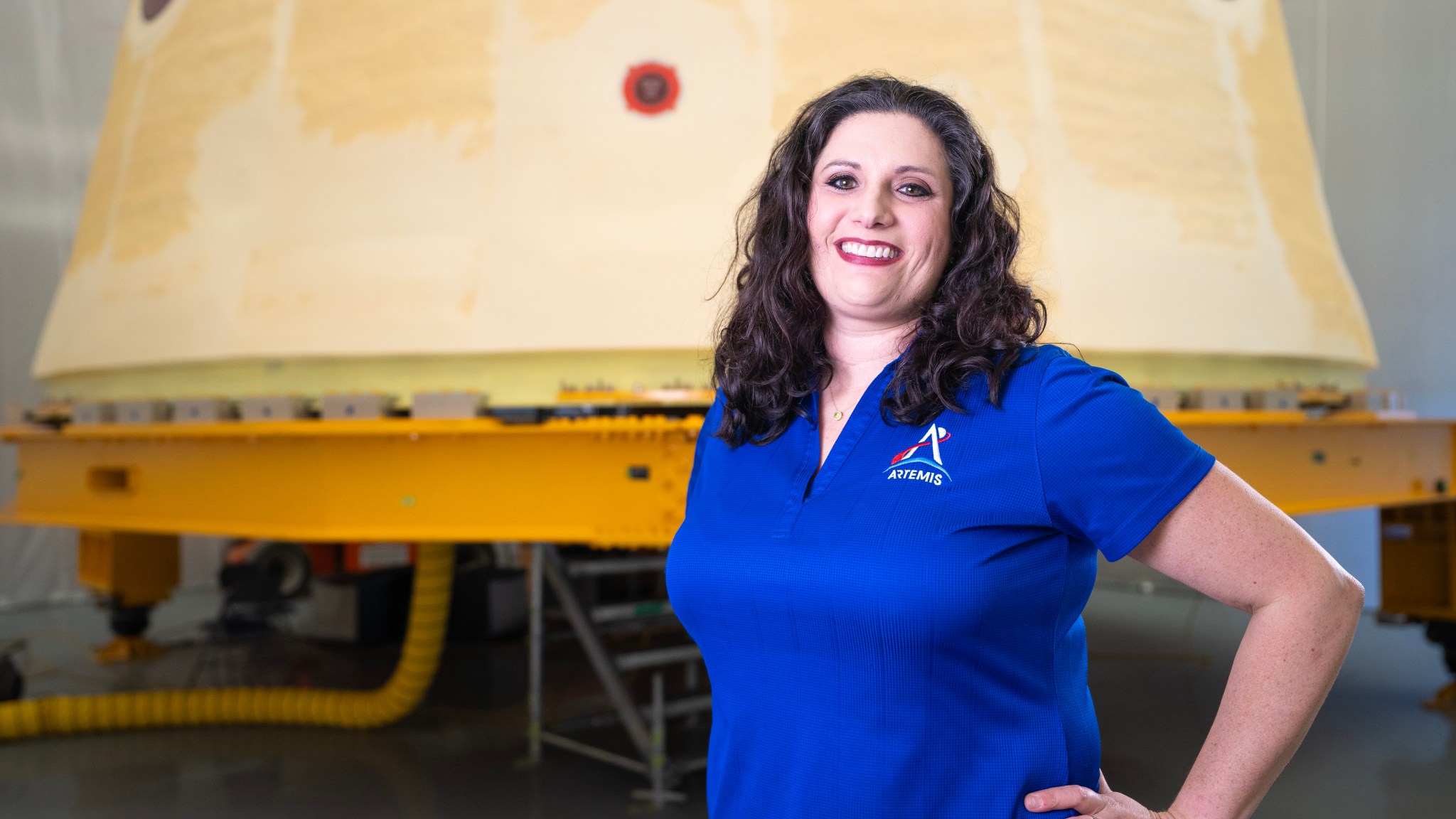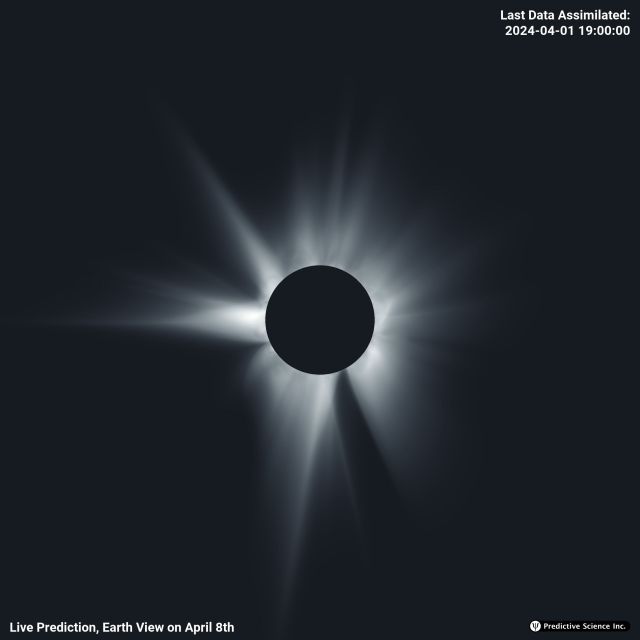I Am Artemis: Lauren Fisher
NASA’s Lauren Fisher, lead engineer for the thermal protection systems on Artemis III’s LVSA, discusses how her unusual background in music performance and education makes her a stronger engineer.


Not many music majors get to be hands-on with building a Moon rocket, but Lauren Fisher has always enjoyed the unusual.
Now a structural materials engineer at NASA’s Marshall Space Flight Center in Huntsville, Alabama, Fisher works on a key adapter for NASA’s SLS (Space Launch System) rocket for the first crewed missions of NASA’s Artemis campaign.
Manufactured at Marshall by NASA, lead contractor Teledyne Brown Engineering, and the Jacobs Space Exploration Group’s ESSCA contract, the cone-shaped launch vehicle stage adapter partially encloses the rocket’s interim cryogenic propulsion stage and connects it to the core stage below and the Orion stage adapter above. The launch vehicle stage adapter also protects avionics and electrical devices from extreme vibration and acoustic conditions during launch and ascent.
Fisher and the thermal protection system team develop and apply the spray-on foam that acts as insulation and protects the adapter and all its systems from the extreme pressures and temperatures it’ll face during flight. The thermal protection system for the component, unlike other parts of the rocket, is applied by hand using a spray gun. When first applied, the insulation is yellow, but after time and exposure to the Sun, it turns orange.
“We’re taking the same stuff someone might use to insulate their attic, except making it for cryogenic atmospheres, and spraying it all over a giant piece of hardware that will help launch us to the Moon,” Fisher said. “With my work for NASA’s Space Launch System rocket, I get to play with foam and glue. I like to call it arts and crafts engineering!”
Although engineering runs in her family, Fisher initially graduated from University of Southern Mississippi with a Bachelor of Arts in music performance and an interest in music education. She developed an interest in carbon-based polymers, and decided to go back to school, completing a chemical engineering degree with a polymeric materials track from the University of Alabama in Huntsville. Her new degree led to an opportunity to work for the thermal protection system team at Marshall.
When Fisher isn’t in the office, she likes travelling to unusual places and checking items off her self-described “Bizarre Bucket List.” Recently, she went to Punxsutawney, Pennsylvania, to watch the famous groundhog predict an early spring.
Being part of the Artemis Generation is incredibly inspiring for Fisher, who takes pride in her work supporting the first three Artemis missions, including Artemis II, the first crewed mission under Artemis, in 2025.
“I’m literally building the hardware that will send the first woman to deep space,” Fisher says. “Watching our rocket take shape, I’m like ‘you see that thing? I did that; that’s mine. See that one? My team did that one. We did that, and see this?’” She beams with pride. “You can do that, too. Just being a part of the generation that’s changing the workforce and changing the space program — it gives me goosebumps.”
NASA is working to land the first woman, first person of color, and its first international partner astronaut on the Moon under Artemis. SLS is part of NASA’s backbone for deep space exploration, along with the Orion spacecraft and Gateway in orbit around the Moon and commercial human landing systems, next-generational spacesuits, and rovers on the lunar surface. SLS is the only rocket that can send Orion, astronauts, and supplies to the Moon in a single launch.
What's Your Reaction?









































